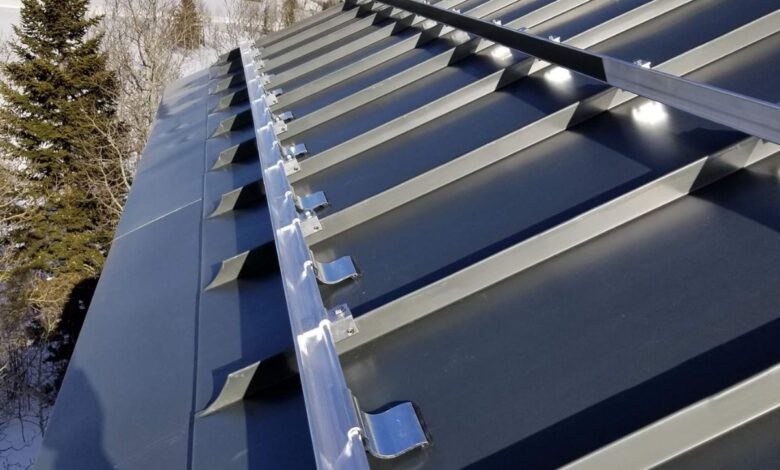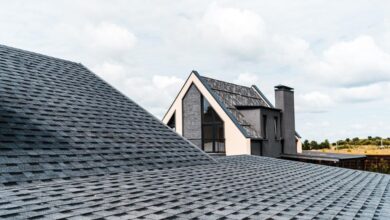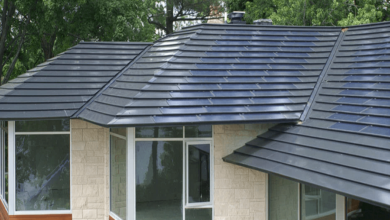Everything You Need to Know About Snow Guard Installation

With summer in full swing, it can be difficult to get back into the mindset that winter will eventually return. However, it will be here sooner than you think. Especially if you live in a state that tends to get colder in the winters and has heavy snowfall, it’s important to start preparing your home for winter, even during the summer months. Preparing this early allows you to test out many different tools and tricks to find what works best for you and your home. Give yourself this summer to work on preparation for the winter.
One of the best ways to prepare for the snowy winter is by researching snow guard installation. Snow guards are simple hardware that resides on your roof. If you live in an area with heavy snowfalls, you surely have seen how compact snow gets when it rests on a roof for a long time. Heavy snowfall creates snow drifts, which can be dangerous to people and property around the roof. We’ve seen several fatalities from snow drifts dislodging from roofs and collapsing on someone just in the past year alone. If that weren’t bad enough, snow drifts also caused major damage to your roof. From metal roof cave-in to tile and shingle roof chipping, cracking, dislocating, and, sometimes, collapse, snow drifts accumulating on your roof never bode well for anyone.
Luckily, there’s a way to ensure that they never happened at all. Snow drifts accumulate terribly on roofs because roofs are large areas for snow to settle on unhindered. If there is something to hinder the snow, it will break the drifts up into smaller, manageable sections, and the snow will melt as quickly as it melts on an uneven surface once the sun starts to rise. Snow guards are the answer. Snow guards are that welcome interruption on the smooth surface of your roof. Whether your roof is metal, shingle, or tile, residential or commercial, whether your roof is part of a cookie-cutter structure or truly unique – snow guards can protect all roofs when installed properly.
Snow guard installation is a relatively simple process, but it needs to be taken seriously. Without care, snow guard installation can damage your roof and ineffective hardware. Since most snow guards are attached to your roof with some clamping mechanism, the clamps can scrape off paint or break tiles if not attached properly. They cause absolutely no harm when you follow instructions, but you must make sure to find the snow guard installation guide that the manufacturer has provided. Here are a few tips to make sure you have all the information you need when planning to install snow guards on your way:
- Check the manufacturer’s site for snow guard installation guides. Most manufacturers will have a free guide available to tell you the general instructions for installing your snow guards. Although certain things will vary depending on your roof, you should find the general best practices for installation in the installation guide. Read this carefully and make sure to write down if anything seems unclear. Although there are plenty of installation guides and how-to videos available, it’s usually best to find resources that are specific to the snow guards made by your manufacturer. Different manufacturers have different standards for insulation and excellence. If you have picked a quality manufacturer, it’s important to make sure that you follow instructions that live up to that standard.
- Contact the manufacturer. No one knows the product you’ll use better than the manufacturer. While there might be plenty of DIY suggestions online, and you can put the snow guards on your roof yourself, how you do it is still something that the manufacturer knows best. Some manufacturers even offer free resources on their websites to help make the process easier. But a quick phone call to ask any questions you might have can’t hurt. And, if you weren’t able to find an installation guide, contacting the manufacturer might help you easily find that information.
- Once you read the snow guard installation guy and have asked to manufacture any questions, be sure to take advantage of an engineer’s opinion. I know that might sound like a lot of work, but it shouldn’t be. Most manufacturers will have a way for you to contact engineers quickly to get an engineered layout for your snow guards. An engineered layout is important, and consulting experienced engineers is necessary to find the best placement for your snow guards since every roof is different. Snow guard layout depends on the type of snow guard, as well. If you’re using a snow rail system, the snow guard installation layout will be entirely different from if you use a bracket. There are benefits to both and definite benefits to using both with the correct roofing style. But, regardless of what bracket you use or what roofing material you’re working with, it’s crucial to get an engineer’s layout suggestions. Then, armed with general information from the installation guide, answers from the manufacturer, and advice from a professional, you can protect your roof for years without causing any problems.




